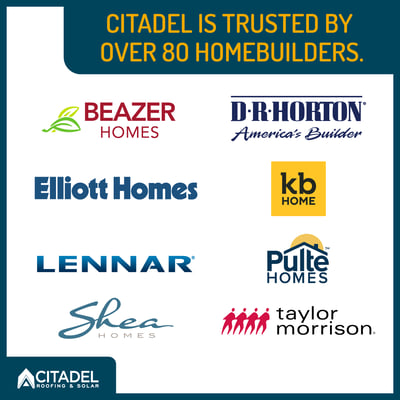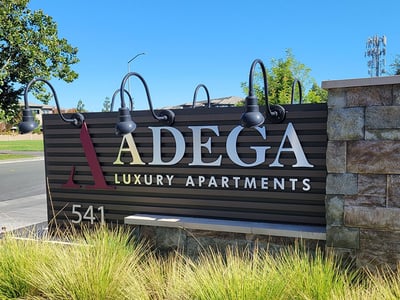Many California property owners, businesses, and builders elect to install solar panels and solar energy storage (batteries). This is for a variety of reasons, such as:
- Increased property value
- Cleaner energy
- Independence from ever-increasing utility electricity costs
And a regulation called Title 24 has made solar panels and batteries even more popular in the Golden State.
For almost two years, the state of California has required solar energy systems on new single-family and multifamily properties including condominiums and apartment buildings. However, this requirement has only affected buildings up to three stories high.
In 2022, the California Energy Commission (CEC) expanded this mandate to include taller multifamily and commercial buildings.
Here is what tenants, buyers, owners, and builders of multifamily residences need to know about this measure.
California’s Solar + Storage Requirement
What is the solar + storage requirement?
The CEC voted to require solar and energy storage systems (also called batteries or battery backup) on many new commercial buildings and high-rise residential buildings. The change was included in the 2022 California Energy Code, which sets building standards for new construction. This is in addition to the California requirement for solar panels on other residential buildings like townhouses and condominiums.
The solar energy systems must be sized to cover 60 percent of the building’s electricity needs. The new building code also requires single-family homes to be designed in a way that allows energy storage to be easily added to the existing solar system.
Additionally, the regulations incentivize the elimination of natural gas from new buildings.
 What buildings does this apply to?
What buildings does this apply to?
This law applies to multifamily buildings more than three stories high, including condominiums and apartment buildings. It also applies to commercial buildings including offices, hotels, restaurants, medical buildings, clinics, schools, theaters, grocery stores, retail buildings, and convention centers.
There is one exception. Multifamily buildings served by utilities that do not offer virtual net energy metering (VNEM) are exempt from the solar + storage requirement. Buildings and units of less than 5,000 square feet are exempt from the storage requirement.
Who benefits from this requirement?
Virtually everyone benefits from more solar and battery storage in California.
Apartment building tenants and condominium owners will benefit from much lower electric bills and the satisfaction of reducing their carbon footprints. Developers and builders will benefit from higher-value properties. Plus, the community, the state of California, and the entire world will benefit from cleaner air and a reduced carbon footprint.
 Who installs the solar panels and batteries?
Who installs the solar panels and batteries?
For installer safety, system efficacy, and building integrity, solar installations must only be completed by licensed contractors.
Over 80 of California’s most reputable builders and property developers contract with Citadel Roofing & Solar to install solar energy and battery storage systems during or after their property’s construction.
Our advice: Have your solar energy system installed during construction. This is always the most cost-effective time to install solar and storage.
How significant is this measure?
Very. California is the first state in the country to require builders to install solar and energy storage systems on new commercial buildings and high-rise multifamily buildings.
When did this become an official requirement?
Title 24 went into effect on January 1, 2023.
What exactly is a solar battery (also called solar energy storage) and how does it work?
Solar batteries capture and store unused energy produced by solar panels. This energy can later be used by residents, powering all kinds of electronic devices.
Solar batteries enable residents and building owners to avoid paying peak electricity prices in the evening (when their solar panels aren’t producing energy). They also keep units powered during power outages.
Learn more about solar batteries and their benefits here. If you have further questions, feel free to ask us.
How California’s Solar + Storage Requirement Affects Apartment Tenants and Condominium Owners
How will I know if my building’s solar was installed well?
Ask the building’s owner or builder which company installed the solar and why they were chosen. In today’s active California solar market, not all solar installers are as concerned with quality and customer satisfaction as they should be.
At Citadel Roofing & Solar, we pride ourselves on completing excellent solar installations throughout northern and southern California from our offices in Vacaville, Sacramento, Santa Rosa, Fresno, and Santa Clarita. In fact, we’re one of the leading contractors installing solar for homebuilders and new home projects, including multifamily construction.
How will I know if I’m getting my fair share of the building’s solar?
Your building manager or condo board will explain how the solar electricity produced on the roof is apportioned between tenants or owners.
This division of solar electricity from one system among different utility customers is called virtual net energy metering (VNEM). It was developed to help people living in multifamily homes lower their electric bills with solar.
How much will I save on my electric bills with solar?
Your savings with solar will depend on:
- The size of the solar and storage system
- How much electricity the solar energy system makes
- How much of the solar energy is apportioned to your unit
- Your local utility electricity rates
How California’s Solar + Storage Requirement Affects Property Owners, Developers, and Contractors
How will I know if the solar energy system is working as it should?
Most modern solar energy systems include a mobile phone app and/or online portal. Here, you can monitor your system’s performance.
You can also view your system’s production numbers on your utility bills.
How significant is this requirement?
Multifamily solar projects—such as townhouses, condominiums, and apartment buildings—are often complex. You should seek a contractor that is well-versed in Title 24 requirements, utility interconnection options, net energy metering (NEM), virtual net energy metering (VNEM), and so on. You also want a company with experience installing solar on low-slope membrane roofs, tile roofs, and composition shingle roofs, as well as on other structures such as carports.
 We at Citadel Roofing & Solar have installed solar for duplexes, triplexes, and residential buildings up to and above six stories tall. We have also partnered with many multifamily builders. For example, we installed solar energy systems for these respected homebuilders:
We at Citadel Roofing & Solar have installed solar for duplexes, triplexes, and residential buildings up to and above six stories tall. We have also partnered with many multifamily builders. For example, we installed solar energy systems for these respected homebuilders:
- Granville Homes: 525 San Jose in San Jose and The District in Fresno
- NUVERA Homes: Centerville Station North and Aventura on Mission, both in Fremont
- USA Properties: Adega Luxury Apartments in Rohnert Park
- Pacific West: Sunrise Village in Gridley and Brunswick Apartments in Grass Valley
- Anderson Homes: Santana Ranch Apartments in Hollister
- SBI Homes: Vida in Morgan Hill (Installation is currently in progress)
In Conclusion
California strengthened its commitment to clean energy with the passage of Title 24. We at Citadel are optimistic about its impact on property owners, builders, and tenants alike.
We also understand that many property owners and homebuilders have questions about this requirement. They also might have specific questions about solar panels, solar batteries, and how to ensure they are compliant and doing the best by their buyers and tenants.
Whether you’re ready to install solar on your multifamily property or you have questions, we’re here to help. Get in touch with our solar experts by requesting a free solar quote:



